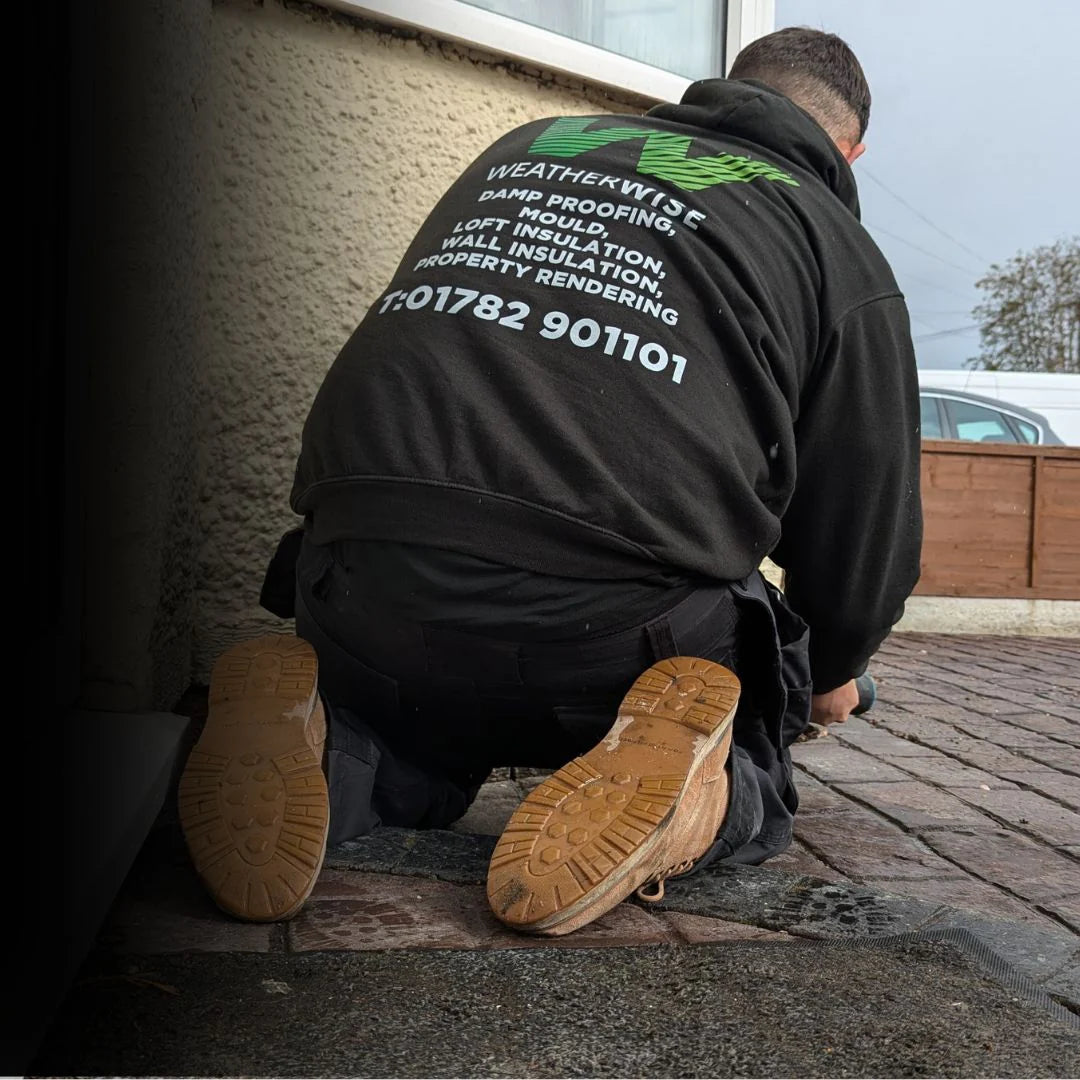🧱 Cavity Wall Insulation – Energy Saver or Hidden Damp Risk?
Many homes in St Helens have had cavity wall insulation (CWI) installed in the past two decades — either through energy schemes or private contractors. While the intention was to improve heat retention and lower bills, badly fitted or ageing insulation can trap moisture, leading to mould, damp patches, and costly repairs.
At Weather Wise, we regularly assess properties in and around St Helens with lateral damp problems linked to CWI failures.
⚠️ How Does Cavity Wall Insulation Cause Mould?
Cavity walls were designed to prevent moisture bridging from outer to inner leaf. When insulation is inserted — typically blown fibre or polystyrene beads — several risks arise:
-
Insulation gets wet from driven rain or defective render
-
Moisture bridges the cavity and transfers across to internal walls
-
Insulation settles unevenly, leaving cold spots prone to condensation
-
Debris in the cavity (e.g. mortar snots) already allows water tracking
-
The property may have been unsuitable for insulation in the first place
In short, insulation can block the cavity’s natural drainage and ventilation, creating a damp trap behind your walls.
🧼 Common Signs of CWI-Related Damp
-
Persistent black mould patches on mid or upper walls
-
Cold or clammy feel to affected rooms
-
Damp that reappears after cleaning or painting
-
Walls that feel damp to the touch but show no rising damp
-
Mould behind furniture on external walls
If you live in a semi or detached home in St Helens built after the 1930s, your property is likely cavity-built — and if it’s showing these symptoms, insulation may be the culprit.
🛠️ Inspection and Treatment Options
1. Visual & Moisture Testing
We start by inspecting internal walls with moisture meters, mapping affected areas, and checking for patterns consistent with CWI damp.
2. External Checks
We inspect brickwork, pointing, render, and weep holes to assess moisture ingress risk. Properties in wind-driven rain zones, like parts of St Helens, are especially vulnerable.
3. Cavity Inspection
If needed, we arrange for borescope inspection or thermal imaging to assess cavity fill condition.
4. Remedial Action
Depending on findings:
-
Install wall coatings or re-render
-
Replace plaster with breathable salt-resistant systems
-
Improve ventilation
-
In severe cases, we refer for CWI removal
🏡 Cavity Wall Problems in St Helens – What We See Most Often
-
Homes in Thatto Heath, Rainhill, and Sutton Leach suffering from mid-wall mould
-
Rendered or painted properties where CWI was installed before render repairs
-
Cold gable walls exposed to wind and rain
-
Extensions or conservatories that altered cavity airflow
👷 Why Homeowners Trust Weather Wise
-
✅ Specialist cavity wall diagnostics
-
✅ Honest advice — no pushy sales
-
✅ CPD-trained experts in damp diagnosis
-
✅ Members of the Damp Proofing Association
-
✅ Backed by the Federation of Damp
📞 Book Your Free Wall Damp Inspection in St Helens
https://weatherwiseuk.co.uk/pages/contact
FAQs
Do I need to remove cavity wall insulation to fix the problem?
Not always. Sometimes it's enough to address external defects or apply breathable plaster systems.
Can this damp be fixed from inside only?
It depends on the cause. We never treat symptoms without understanding the source — external, internal, or cavity-related.
Is it safe to live with mould?
Mould can affect respiratory health, especially for children and elderly people — so it's best to deal with it promptly and properly.



